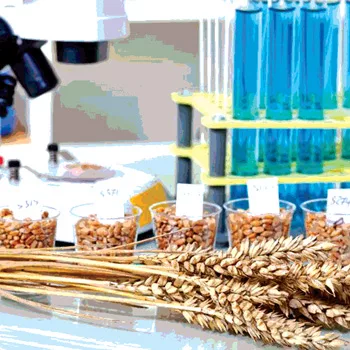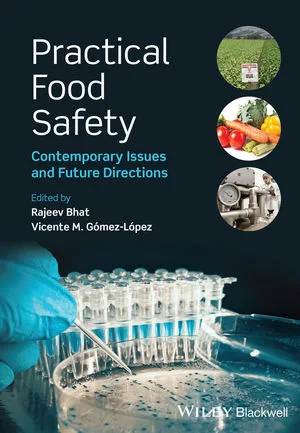HACCP Issues and Impacts

Hazard Analysis and Critical Control Points (HACCP) was originally developed based on several key program types. The templates were created for specific industries and food risks and therefore do not fully address HACCP-level requirements of all food-level risks in the marketplace. For example:
• AIB is focused on the bakery and confection market.
• Codex Alimentarius Commission looks at general food on a global level.
• The U.S. Department of Agriculture Food Safety and Inspection Service (USDA-FSIS), International HACCP Alliance and the National Environmental Health Association focus on meats, protein and dairy.
Much of the development of HACCP programs is based on training for these segments. Ultimately, foods or industry segments requiring HACCP have followed these established models, even though they do not always align with food risks or operational models. As a result, HACCP plan coordinators outside these risk categories [e.g., food contact packaging, contract food packaging, food ingredients, pet food, service providers (e.g., transport, warehouse, logistics, uniforms)] have been challenged to make determinations with limited comparable references.
Unfortunately, facilities like these are often left with ineffective HACCP programs that are deficient in managing operational risks unique to the company’s product or processing environment. These may include a lack of risk assessments, minimal preventive controls and validations or not being scalable to the changing requirements of the market [i.e., Global Food Safety Initiative (GFSI) continuous improvement, science-based findings of risks, Food Safety Modernization Act’s (FSMA) Hazard Analysis and Risk-Based Preventive Controls].
Workable HACCP Solutions
Food companies, including those specializing in food-grade ingredients, food contact materials and packaging as well as service providers, must develop HACCP programs using a “clean-sheet” approach rather than follow the established HACCP templates used for other specific food processor types. This approach should be based on the fit of their operations (e.g., high-risk protein, low-risk protein, liquid or dry ingredient, chemical, packaging or logistics) to existing HACCP models and templates and/or the unique aspects of the operational models and food risks.
Effective and workable approaches to mitigating the above issues should consider designing and customizing HACCP training to include product and unique process flow. To best accomplish this, several issues must be addressed, including the following:
• Training needs to be more open to specific and unique industry and operational needs. It further needs to be “fit for the use” of the related product and process food safety risk. For example, in packaging with high engineering of product, training needs to focus on the ultimate process design and capability developed and maintained by process engineers.
• Content registers must be developed to provide elements and direction for HACCP program design, development and implementation. HACCP teams should work under the direction of a competent and advanced HACCP-trained coordinator to design and establish the content register during development and implementation, in addition to using the established five-step approach and seven HACCP principles per Codex Alimentarius. The content register should address risks and control measures that are unique to operations, finished product and services that impact food safety (e.g., pest control, service contractors, trainings, comanufacturers).
• The HACCP development process needs to be open and channel aspects of the program to the risks associated with nontraditional HACCP food applications (see “New HACCP Applications,”) or service operations.
• In-depth reviews and assessments should be conducted by an appointed HACCP/food safety team and/or outside expert(s) with emphasis in the following areas:
• Food ingredients, including dry, mill, liquid, whole grains, snack foods, etc.
• Potential pathogens unique to raw materials/ingredients, potentially introduced from processing conditions and the environment, water activity, allergen control program, operational product changeover, food contact utensils, maintenance tools, microbial air quality based on air-handling units, process room air quality and pressure, critical equipment necessary for safe food production, environmental monitoring programs, cleaning in-place and cleaning out-of-place, plant construction monitoring program during operation, preventive maintenance program for critical parts and aligned equipment, employee traffic, material and product handling, contact packaging supplier, etc.
• Food contact packaging (i.e., flexible films, lids, paper, converters, rigid plastic, glass, metal), including source and validation of inks and dyes (domestic or imported), compressed air quality, type of lubricants (food-grade versus non-food-grade, soy- or mineral oil-based), physical and chemical properties with reference to ink, migration and permeability, compatibility and reaction of adhesives/inks under various handling conditions by consumers such as heat and cold. These could be mitigated through documented material and ingredient vendor/supplier validation studies or in-house finished product shelf-life studies.
• Service providers (e.g., transport, logistics, uniforms), including airflow and circulation during handling and transportation of refrigerated and frozen foods, approved laundry chemicals, cleaning water temperatures, verification and validation of cleaning uniforms during storage and transportation, and driver and personnel training on critical responsibilities that impact food safety.
Operational Processes and Food Risks
HACCP training and programs are typically based on products at high risk of biological contamination, but many other product and operational scenarios now require HACCP. Companies should compare their operational process and food risks with HACCP model options. This can be achieved through the following:
• Reviewing and assessing available human and financial resources with accountability for deliverables
• Developing high-level, risk-based matrix models
• Aligning definitions for likelihood and severity factors with identified potential and operational risks from biological, physical, chemical, allergen and radiological perspectives
• Using scientific validations aligned with process and/or product scope
• Conducting documented and scientific in-house verification and validation study
• Further aligning FSMA preventive controls and incorporating them into the various food operational and risk categories
Supporting Information
When developing HACCP plans and strategies, identifying industry, academic, category, customer, supplier and established global information can help support plan design, including Hazard Analysis, preventive controls and risk rating/ranking. This information can be obtained through research and communication updates relevant to the food risks of the product or product type being addressed. Some reliable sources include the following:
• Industry publications
• Product and raw material technical information and food intended-use validation
• FDA listing of approved food and food contact materials
• EU, UK, Canadian and other national regulatory requirements
• Global regulatory positions (food-grade or non-food-grade determinations)
• Industry and university studies on food-grade products and material risk requirements
• Examination of past outbreaks resulting from non-food contact materials or exposures (e.g., liners, pallets, transports, incipient aids, process aids, additives)
• Determination of risk severity and experienced likelihood available to substantiate specific Hazard Analysis
• Dialogue with customers and suppliers related to their determination of risk analysis for the food-grade product provided
Value-Added Activities
Developing and implementing HACCP programs require a significant investment of time and effort. Although HACCP continues to evolve, it is up to the individual company to design and customize HACCP programs to make them effective and workable, particularly in foods and industry segments outside HACCP’s “standard” risk categories. There are a number of operational considerations that can help ensure a compliant and value-added HACCP program:
• Appoint a food safety team with extensive process and product experience, including R&D, product engineering, process engineering and maintenance
• Conduct effective and customized HACCP team training by a certified lead HACCP trainer with extensive and varied product process experience, including contact packaging, milling, snack foods, etc.
• Establish an approved and verifiable supplier and purchasing program
• Conduct in-depth risk assessment and implement mitigation strategies for critical equipment
• Include and establish critical equipment during the process Hazard Analysis risk assessment and development
• Achieve compliance to the GFSI scheme of choice as an HACCP plan requirement
• Develop and implement a verifiable change-management program that focuses on new product and product development
• Develop a robust in-house training program for CCPs and operational prerequisite monitors and verifiers
With these considerations in mind, expanding HACCP content to meet operational objectives can be successfully achieved.
Regina Tihfon, M.Sc., is a senior consultant at Kestrel Management with 25 years of experience in food safety and quality assurance. She trains management and operators in food safety, HACCP and conformance to specifications and ISO 9001. Regina has an M.Sc. in food science and technology from Texas Tech University and an Ordinary National Diploma in Food Technology from Birmingham College of Food (England).
Looking for quick answers on food safety topics?
Try Ask FSM, our new smart AI search tool.
Ask FSM →








